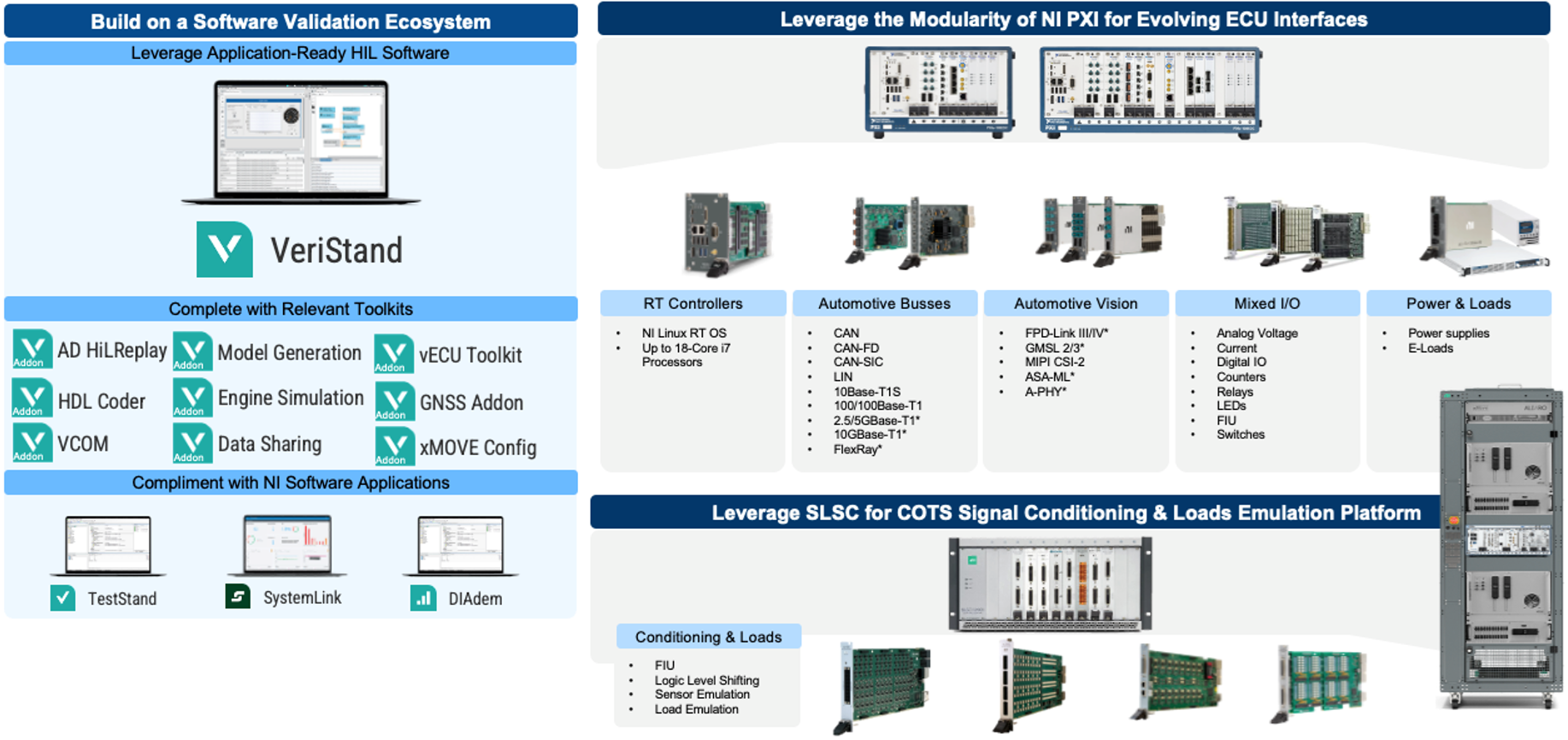Open and Extensible Platform
One of the core strengths of the NI platform is its open and extensible architecture, which allows engineers to build scalable, adaptable HIL systems using a mix of off-the-shelf and custom components. NI provides well-documented mechanical, electrical, and software interfaces across its platforms—including PXI, SLSC, and software tools like LabVIEW, VeriStand, and TestStand—enabling customers and partners to extend the system with ease.

| PXI Platform Feature | Description |
|---|---|
| Broad Ecosystem of I/O and Expansion Modules | The long-standing NI ecosystem includes a wide range of PXI and SLSC modules developed by NI and third-party Alliance Partners. Modules span from high-speed digital I/O, analog acquisition, and bus communication (CAN, LIN, FlexRay, Ethernet) to signal conditioning, fault insertion, and sensor/load emulation. This allows test engineers to configure systems that meet specific application needs without resorting to custom development. |
| Custom Hardware and Software Extension | For highly specialized requirements, customers can design their own modules—either PXI or SLSC—using published NI interface specifications. Whether it is a proprietary sensor interface, safety-critical switching logic, or a nonstandard physical layer, the NI platform provides the hooks needed to integrate seamlessly into existing test architectures. NI also provides development tool kits and reference designs to accelerate this process. |
| Software Integration and Reuse | The NI software-first approach makes the platform uniquely flexible. Tools like VeriStand provide real-time test orchestration, while LabVIEW and TestStand enable customization, automation, and data integration. With abstraction layers and reusable software components, systems can evolve across programs and life cycles without starting from scratch. |
| Investment Protection and Long-Term Scalability | Because all components adhere to open, standardized interfaces, the NI platform makes it easy to scale or upgrade systems over time. Users can repurpose test assets across programs, replace modules without re-architecting the system, and confidently manage obsolescence. This modularity ensures alignment with both current and future testing needs, maximizing return on investment. |